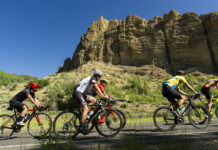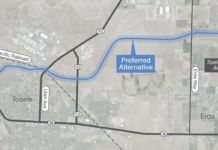By Lou Melini
By: Mickey Thomas
2005
iuniverse.com
I had seen this book advertised in the Adventure Cycling Association store for several years. I was curious but turned off by the title. I thought the title was silly and therefore so was the book. I was fortunately able to trade books with a friend, so that is how I acquired this book.
First the title, it came from the geography-challenged girlfriend (apparently ex-girlfriend) of author Mickey Thomas “who sneeringly said; You can’t ride a bicycle to Alaska”. When he asked why she replied; “because Alaska’s an island, doofus”.
Now, the book; the book is good, especially if you plan on riding to Alaska. The book could be considered dated as Mr. Thomas did the ride in 1980. (There was one passage about a freewheel coming apart with ball bearings spread all over.) However I would bet that the geography, the weather, the road conditions, the distance between towns and the mosquitoes haven’t changed.
Some passages from the book are as relevant today as 30 years ago: “The mosquitoes at Mighty Moe’s Campground were magnificent as far as mosquitoes go.” We woke up to a brilliantly sunny 31F morning, on July 9.” “After a few miles, the road turned to gravel. We would essentially be on gravel roads for the next 1300 miles.” ”Hungry, we stopped at a little restaurant in the middle of nowhere (it was the only thing we saw in the 100-miles between McBride and Prince George.)” “He was large, maybe 110 lbs, with a dark gray color. Only then did I realize how utterly cool and potentially dangerous he could have been running with a pack of wolves looking for a nice snack.” (They also saw elk, bear and moose)
Riding to Alaska is on my “bucket list” of rides I want to do, (though not on my wife’s list). After reading the book, I will have to think this through. I could handle the weather (though one would have to like riding a lot in rain gear), the gravel roads (with the occasional need to push your bike), the distances between cities and the self-reliance of bike travel but I do not like running around a campsite with mosquito netting and the fragrance of DEET while trying to set up a tent or eat a meal. There were quite a few references to flying insects, including biting flies.
The ride to Alaska that Mr. Thomas took was an organized trip with 9 other cyclists through the Adventure Cycling Association (named BikeCentennial at that time). Starting in Missoula, Mt., the total mileage was about 3300 miles, 1300 on gravel. Inclement weather occurred on 54 of the 67 days. The temperature range was from the 80’s to a low of 23 (in Denali National Park). Only 7 of the 10 completed the trip, the 3 left for various reasons, with 2 leaving at about the 900-mile point.
Riding to Alaska for 3300 miles with 9 other riders can cause some problems and there were some. Mr. Thomas discussed the interactions with the group quite well. Overall, the participants go along well and worked together well. There were other issues such as the group separating at times due to differing physical capabilities. Mr. Thomas, for example, somehow thought he could ride to Alaska without physical preparation. He had to hitchhike most of a 600-mile stretch after leaving Glacier National Park due to knee pain. He did finish the ride without any further problems.
If you have ever thought about a self-supported ride with a group, this is a good book to read. The adventure of riding to Alaska also makes it a good read, whether you plan on riding to Alaska or not. So, given that Amazon recently ranked Salt Lake City 10th (presumably from sales) on its list of reading cities, help keep this ranking by reading this book. And if you ever have thought about riding to Alaska, let me know.







